Affiliate disclosure: This post may contain affiliate links. Please see our Privacy Policy.
Don’t just dump those used coffee grounds in the trash! There are so many incredible uses for coffee grounds in the garden, around the house and in the kitchen.

Table of Contents
- Uses for Coffee Grounds in the Garden & Outdoors
- Composting Coffee Grounds
- Using Coffee Grounds in Vermicompost
- Applying Coffee Grounds Directly to Houseplants
- Growing Mushrooms on Coffee Grounds
- Coffee Grounds Repel Ants, Snails, and Slugs
- Spacing Small Seeds (Like Carrots)
- Outdoor & Pet Uses for Coffee Grounds
- Repel Mosquitos with Burning Coffee
- Sanding the Icy Walk with Coffee Grounds
- Pet Flea Treatment
- Cat Repellant
- Bait Worm Food (and Fish Attractant)
- Household Uses for Coffee Grounds
- Scouring Pots and Pans with Coffee Grounds
- Garbage Disposal Deoderizer
- Fixing Scratched Furniture
- Natural Coffee Grounds Wood Stain
- Coffee Fireplace Cleaner
- Coffee Ground Hand Deoderizer
- Coffee Ground Air Freshener (and Deoderizer)
- Keep Cut Flowers Fresh Longer
- Coffee Grounds Cockroach Trap
- Baking Empty Pie Shells
- Homemade Espresso Powder with Spent Coffee Grounds
- Crafts with Used Coffee Grounds
- Kids Activities with Used Coffee Grounds
- Coffee Mud Play Dough
- Coffee Fossils
- Coffee Surprise Eggs (or Rocks)
- Coffee Slime
- Coffee Easter Egg Dye
- Coffee Painting
- DIY Skincare & Beauty with Coffee Grounds
- Coffee Scrubs & Bath Bombs
- Coffee Eye Pads, Cream, and Serum
- Coffee Lip Balm
- Coffee Shampoo, Hair Mask and Hair Dye
- Coffee Soap
- Recipes Using Old Coffee Grounds
- More Ideas
Used coffee grounds may not make a decent cup of coffee, but they’ve been there, done that. Once you’ve got a cup of coffee in hand, there are literally dozens of practical and useful ways to repurpose used coffee grounds.
My husband and I are serious coffee drinkers, and we go through about 2 pounds of coffee a week in our house. That amounts to a lot of used coffee grounds.
While they can always get a second life in the compost, I started looking for other uses for coffee grounds around the house. Waste not, want not, and if you have a free resource in abundance, you might as well get the highest possible use from it.
We use our spent coffee grounds to fertilize houseplants, boost compost, provide traction on slippery walkways and we’ve even grown our own mushrooms in coffee grounds.
Even with all those uses, I started wondering if they couldn’t go to a higher purpose. I did a bit of research and I was surprised to find literally dozens of ways to re-use old coffee grounds. Now we actually go out of our way to pick up extra coffee grounds whenever we see them available.
Our local grocery store has a Starbucks inside, and there are often 20+ pounds of coffee “grounds for your garden” sacks just free for the taking.
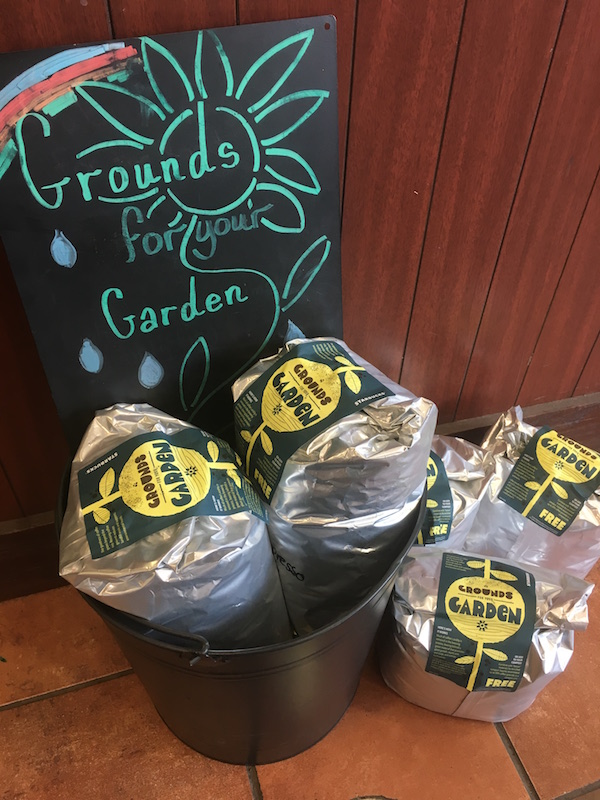
Uses for Coffee Grounds in the Garden & Outdoors
The most obvious ways to use coffee grounds are in the garden.
Contrary to popular belief, used coffee grounds are not acidic. Most of the acid is removed when the coffee is made, and the leftover grounds are just slightly below a neutral pH (6.9).
A neutral pH means they’re perfect for the garden!
Composting Coffee Grounds
I knew that coffee grounds were great in the compost. Just like any other organic plant material, they decompose into nutrient-rich compost.
Most experts recommend a carbon to nitrogen ratio of 25 or 30 to 1 for the best compost. With good nutrient ratios, compost breaks down quickly without intense odors.
Most kitchen waste is very high nitrogen, and you have to add brown material (dry leaves, sawdust, etc) to balance the pile and avoid a smelly compost pile.
Coffee grounds, on the other hand, are almost perfect. They usually have a C:N ratio of 20 or 25 to 1, and they compost beautifully without much fuss.
Scientists have actually studied the effect of coffee grounds on compost piles and found that compost piles that are 40% coffee grounds produced the least greenhouse gasses and made the highest quality compost (Source). This alone has me picking up several sacks of “grounds for your garden” every week…
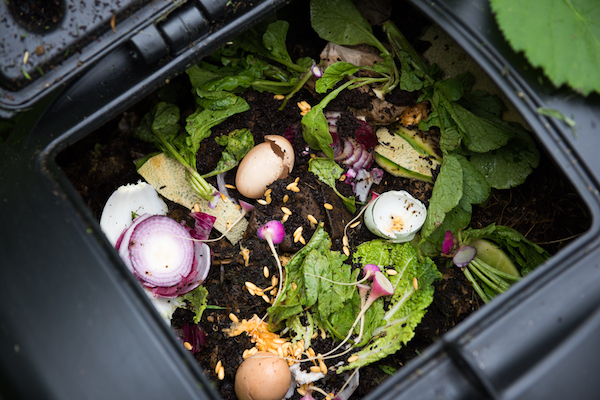
Using Coffee Grounds in Vermicompost
Vermicompost is a bit different than ordinary composting. While microbes do most of the work in a standard compost pile, vermicomposting is done indoors in small controlled containers. The organic material is fed to worms, which do most of the decomposition.
The process is much faster than regular composting, and the resulting worm castings are extra rich in nutrients. Just take a look at the $20 price tag on a small bag of worm castings at the garden center and you’ll realize these little guys make black gold!
We used to have a vermicomposting set up in our basement and I assumed that worms would need richer fodder, like carrot tops, melon rinds and more calorie intensive food. Not true.
A bit of research and I learned that worms do great on used coffee grounds. According to Uncle Jim’s Worm Farm, the biggest issue is that coffee grounds can be too dry if left out. Be sure to wet the used coffee grounds thoroughly before adding them to a vermicomposter.
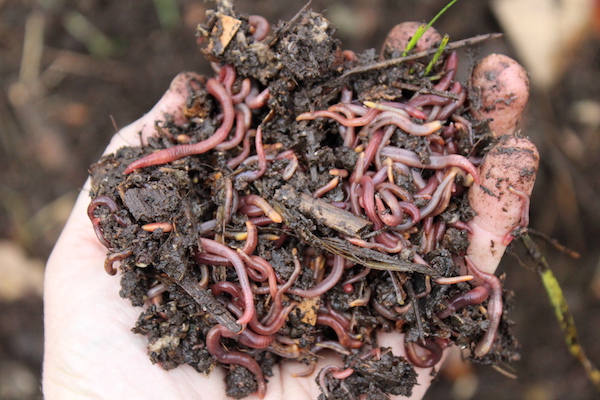
Applying Coffee Grounds Directly to Houseplants
If you’re living in an apartment and have no practical way to compost at home, you can apply coffee grounds directly to houseplants.
While hopefully, you have some sort of municipal food scrap composting program to take care of most of your food waste composting, it’s still a good idea to go out of your way to save coffee grounds to the side for your own home use. No need to give away perfectly good ready to use fertilizer!
Since coffee grounds are already relatively nutritionally balanced and pH neutral, they act as a slow-release fertilizer that’s perfect for indoor plants.
Top off pots with a few scoops of used coffee grounds every few weeks and you’ll save on fertilizer.
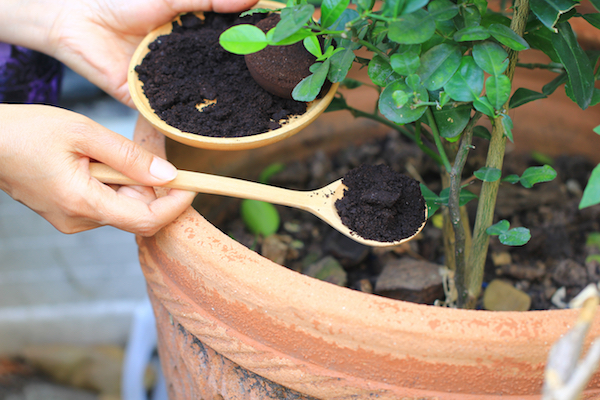
Growing Mushrooms on Coffee Grounds
While garden plants love coffee grounds, they’re not the only ones eager to eat up your coffee waste. Oyster mushrooms are incredibly versatile, and they’ve grown on a variety of substrates…including used coffee grounds!
We grow shiitake mushrooms outdoors on maple logs, but the process is pretty involved. Growing a small batch of oyster mushrooms is incredibly simple, and you only need a tiny bit of counter space to grow huge crops of delicious mushrooms.
If you’ve never grown mushrooms before, I’d suggest starting with a small countertop mushroom growing kit that comes ready to produce. You’ll be able to watch all the stages of growth before you experiment with inoculating your own supply of used coffee grounds.
When you’re ready, Mother Earth News has a great article on growing mushrooms on coffee grounds that walks you through every step of the process.
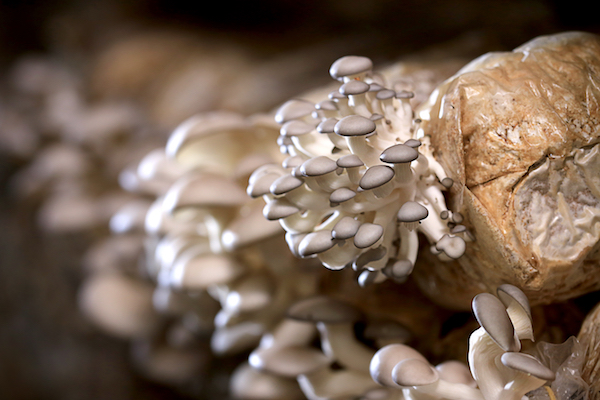
Coffee Grounds Repel Ants, Snails, and Slugs
While coffee may smell great to you and me, the strong smell deters ants and slugs. Sprinkle a ring of coffee grounds around sensitive crops like lettuce (for slugs) and melons (for ants).
They’ll only remain potent for a few days before the grounds begin decomposing and feeding your plants (double win), but if you’re a daily coffee drinker that’s really not an issue.
Skip the pesticide and use coffee grounds as an organic solution instead.

Spacing Small Seeds (Like Carrots)
It’s tricky to space small seeds (like carrots) in the garden. The incredibly small, light seeds tend to all fall in one place in the row, which means thinning later and lots of wasted seed.
Garden centers have come up with all manner of ways around this, like special carrot seed planters, pre-spaced seed tapes and even pelletized carrot seed encased in a tiny ball of clay for easier handling.
Mixing your carrot seed with dried used coffee grounds is an inexpensive solution that helps control your seeding rate, ensuring that you can sprinkle them more evenly down the row. As an added bonus, the fertilizer from the coffee grounds will help boost your carrots. Double win!
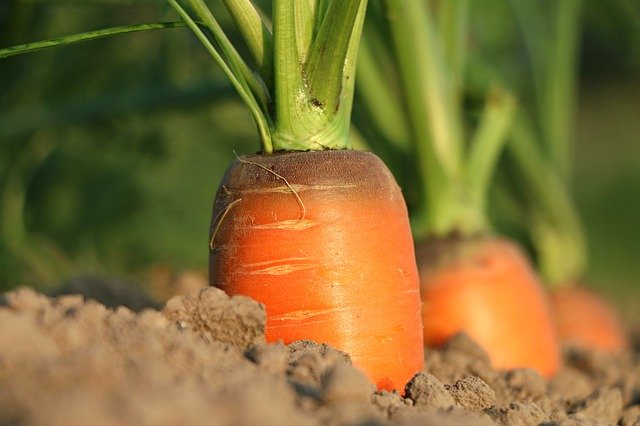
Outdoor & Pet Uses for Coffee Grounds
Even if you don’t have a garden, there are plenty of ways to put coffee grounds to use in your yard.
Repel Mosquitos with Burning Coffee
While slugs and snails may react to the smell of coffee sprinkled on the ground, blood-sucking little beasties like mosquitos take a more active approach.
Honestly, I never would have thought to try it myself until I saw an article from Death Wish Coffee describing the process in detail.
Start by drying the coffee grounds thoroughly, and then place a pile of them on a clay pot, baking tray or piece of aluminum foil. The smoke from slowly smoldering coffee grounds repels mosquitos like a citronella candle or tiki torch, but without having to buy either.
It’s a good thing to know if you’re getting eaten alive during a backyard BBQ and you’re fresh out of other options.
(Obviously, be careful, and don’t try this if you’re in a fire-prone area.)
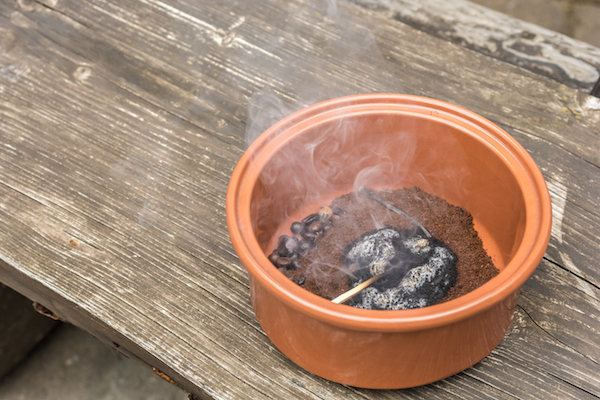
Sanding the Icy Walk with Coffee Grounds
With ice in the forecast up here in Vermont, coffee grounds for traction is next on my list to try. While coffee grounds won’t actually melt the ice like salt, they will add traction like sand.
According to Food52, “Used-up grounds are good for adding extra traction to slippery sidewalks and steps. And though one pot’s worth of grounds might not seem like enough to make a difference, you can probably amass a decent supply of useful grit after a week or so of brewing.
Like sidewalk salt or sand, the coarse texture of ground coffee provides a safer surface to walk on than slippery ice. It also happens to be an existing part of your grocery list—which means that this cold weather utility won’t cost you any extra.
I should note that some sources would like to have us believe that the coffee grounds actually help the ice melt faster, which would be amazing, but this has sadly been debunked. Still, don’t let that stop you from using your leftover coffee grounds this winter instead of throwing them directly in the trash!”
Obviously, they should be dry before you try this, or you’ll just make the ice problem worse.
Pet Flea Treatment
When I picked up several bags of coffee grounds from our local Starbucks, the barista asked, “Is your flea problem really that bad?”
It was the middle of winter, so she assumed I wasn’t using it for my garden. This time of year, she tells me, people mostly pick up coffee grounds for use on their pets. I’d never heard of it, but she described the process she uses for her cat.
On warm days, she’ll take him outside and scrub used coffee grounds into his fur. She’d then take her flea comb and thoroughly brush her cat, pulling out both the grounds and the fleas.
Apparently, fleas can’t stand the smell of coffee, and adding coffee grounds to a flea combing helps give them the signal to leave (and prevents them from jumping back on).
She gets her husband to help hold the cat because the cat hates the whole ordeal, but she feels she has little choice since the feline is allergic to over-the-counter flea treatments and his skin gets hot spots from scratching himself raw from fleas. The coffee treatment really works, provided it’s done every month.
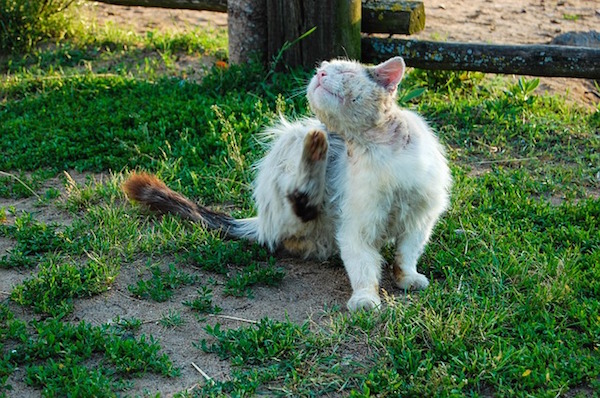
Cat Repellant
After learning that used coffee grounds are a natural flea treatment, I also learned that cats particularly hate the smell of coffee. Some gardeners sprinkle coffee grounds around the perimeter of their garden, and the smell supposedly keeps neighborhood cats from coming in to use the soft garden soil as a litter box.
With that in mind, used coffee grounds might be a better flea treatment for dogs than cats, unless you lack other choices.
Bait Worm Food (and Fish Attractant)
Fishermen are known to add a few scoops of used coffee grounds to their fishing bait worms to help keep them alive longer. The grounds act as food for the worms and help provide them with comfy bedding.
Savvy fishermen quickly noticed that they caught more fish with worms kept in coffee grounds, and it’s now common belief that fish, especially trout and bass, are attracted to the smell of coffee grounds.
To some extent, the practice has lost its original intent to keep the worms alive longer for more fishing trips. These days some fishermen will just store their worms in coffee grounds overnight to give them that fish-attracting scent.

Household Uses for Coffee Grounds
Don’t have a garden? No backyard either? No worries!
There are plenty of ways to use coffee grounds around the house.
Scouring Pots and Pans with Coffee Grounds
Grime and gunk stuck to your pots and pans? Sprinkle coffee grounds on the toughest spots, and they’ll act as a gentle scouring pad. Steel wool and chemical cleaners are tough on hands (as well as pans), but coffee grounds can do the job without scouring your hands to bits.
The naturally abrasive texture will scrape away caked-on food, and your cookware will rinse clean without the use of any chemical cleaners.
Garbage Disposal Deoderizer
An in-sink garbage disposal is wicked convenient and can help prevent clogged pipes, but they can also get smelly. My mom used to put whole lemons into ours about once a month to keep it smelling fresh, but used coffee grounds can do the job too.
There’s a trick to it though…
I found instructions for making your own in garbage disposal deodorizing tablets using coffee grounds mixed with a bit of Epsom salt and baking soda. Store them in a jar near the sink and they’ll be on hand to banish smells whenever you need them.
Fixing Scratched Furniture
With two pre-schoolers in the house, we definitely have our share of scratched furniture (and hardwood floors). Used coffee grounds actually have oils that can help mask furniture scratches, especially in dark-colored woods.
One article on home furniture repair suggests using “a Q-tip to rub damp coffee grounds into the scratch. Allow them to sit for a couple of hours before wiping away to allow the coffee oils to penetrate the scratched wood.”
Natural Coffee Grounds Wood Stain
Simply repairing tiny furniture scratches with coffee grounds is one thing, but take it a bit further and you can actually use coffee grounds to stain wood.
Hoping for a darker look on a simple pine dresser? Dress it up with a coffee ground stain.
You’ll find instructions to convert used coffee grounds into a dark wood stain on The Family Handyman.
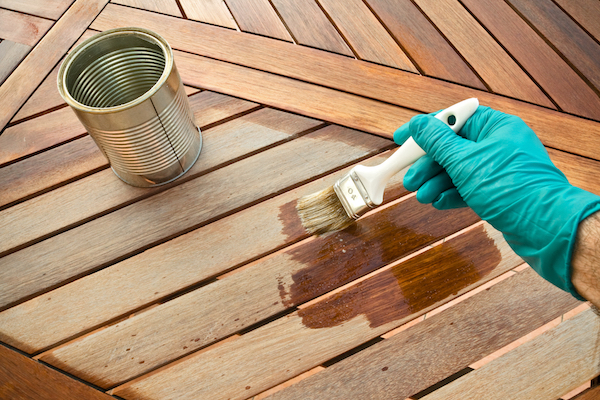
Coffee Fireplace Cleaner
When I read that coffee grounds were used to help clean a fireplace, I assumed it was due to their scouring power. Nope, this works a bit differently.
Cleaning the ashes out of a fireplace can be a messy business, and the wood ash can poof into the air easily covering every surface in the room (and filling your lungs). Start by topping the fireplace ash with a bit of used coffee grounds. The coffee helps bind up the smallest ash particles and allows you to scoop out the fireplace ash with less mess.
Coffee Ground Hand Deoderizer
We eat a lot of onions and garlic in my house, and after I’ve been chopping for a while it can be tricky to get the smell off my hands. Lavender hand soap doesn’t touch the onion smell, it just adds scents over the top.
Coffee grounds, on the other hand, don’t just mask the odor. They naturally absorb odors while covering them up with a more pleasant scent.
Keep a jar near the sink and scrub your hands with them to help buff off any smells (and you’ll get some nice exfoliation at the same time.)
The same trick works with smelly feet, just in case you’re wondering…
Coffee Ground Air Freshener (and Deoderizer)
While coffee grounds can quickly deodorize your hands during washing, they can also work more passively to deodorize a room (or car…or refrigerator). They contain compounds that can bind smells in the air, similar to a jar of baking soda. That’s one reason it’s important to keep your coffee in a tightly sealed container to keep it from absorbing odors.
I found a really nifty DIY used coffee ground air freshener that’s actually surprisingly beautiful, and it beats the heck out of my idea of just putting a bowl of dried coffee grounds out in the corner of the room.
Similarly, another site suggests using whole coffee beans in a sock as a car air deodorizer. No need to use fresh beans when thoroughly dried used coffee grounds will work just as well.
If you’re crafty, you can even get really decorative with your air freshener, making it a centerpiece on a table using a vintage coffee grinder drawer. Just change out the dry, used coffee grounds every week or so.
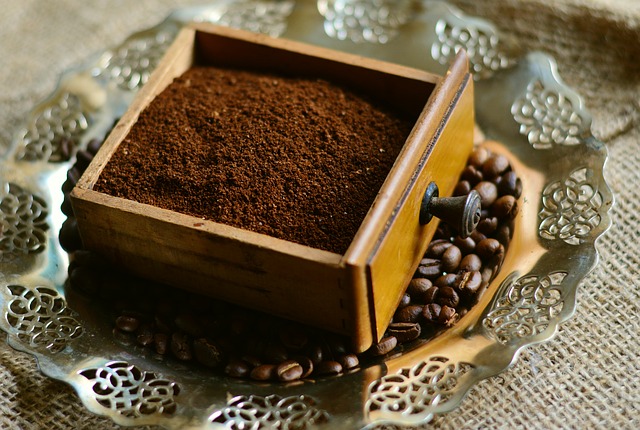
Keep Cut Flowers Fresh Longer
Cut flowers need some source of nourishment to stay fresh, and they don’t last all that long on water alone.
Most florists recommend adding a tiny bit of flower food or fertilizer to the water. In a pinch, other sources of nitrogen like sugar or flat soda work too. Coffee grounds are a natural plant food, and used coffee grounds won’t affect the pH of the water.
Add a tablespoon or so to the vase water, but be sure to change the water daily (or every other day) to prevent mold or other issues. (You’re supposed to do that anyway…)
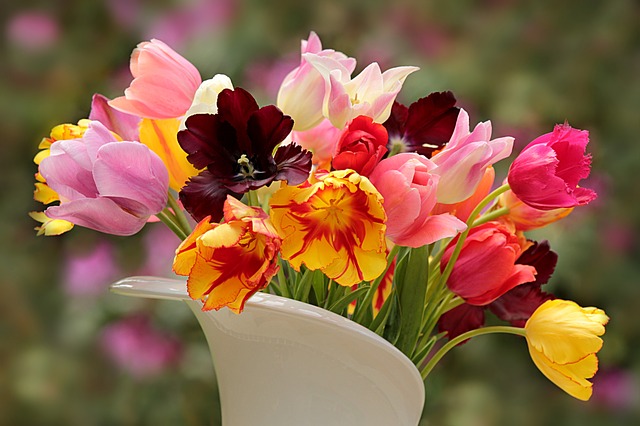
Coffee Grounds Cockroach Trap
Apparently, cockroaches are attracted to the smell of coffee grounds (what won’t those little buggers eat…).
Homesteady has instructions for making a DIY cockroach trap using old coffee grounds.
They suggest filling “large glass jars about halfway with water and placing small cups of moistened coffee grinds inside each jar. The roaches are attracted to the scent of the coffee grinds and enter the jar….Once the roaches crawl inside the jar, they are unable to escape.”
Baking Empty Pie Shells
Cream pies like French Silk and Banana Cream pie are poured into a pie crust that’s already fully baked. If you’ve ever tried to bake an empty pie shell though, you realize that it bubbles up from the bottom without something inside to weigh it down.
Fancy baking stores specialized pie weights to help, and creative cooks solve this problem by filling the shell with uncooked dry beans (which are then ruined and thrown away).
Why not solve this problem with something you’re already discarding?
Place the unbaked pie shell in a tin, and then cover it with aluminum foil before filling it with dried used coffee grounds. The foil keeps the coffee from coming in contact with the crust, and the coffee grounds hold the pie shell in shape beautifully.
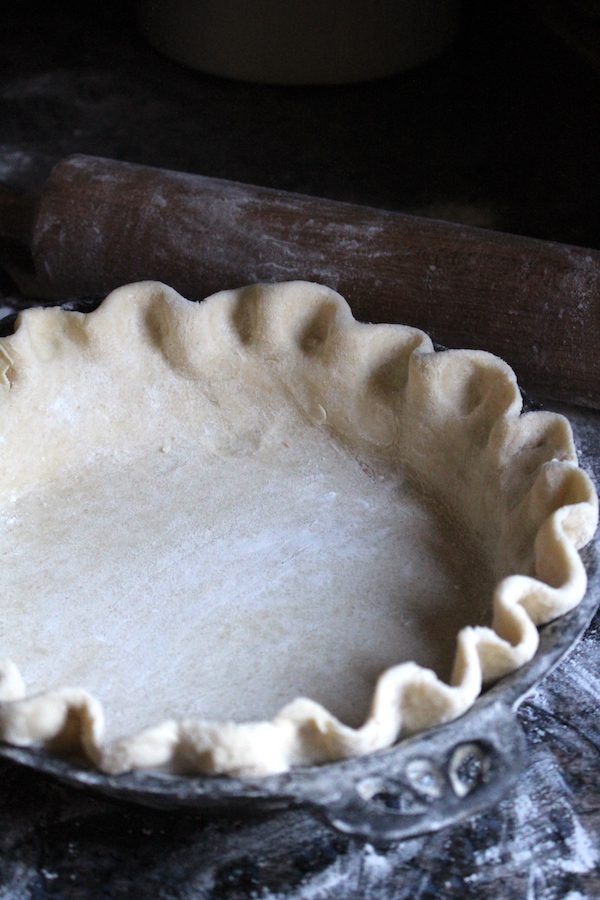
Homemade Espresso Powder with Spent Coffee Grounds
Wait, what? Isn’t espresso powder just super concentrated coffee flavoring? Why on earth would you make it with spent grounds?
Well, spent grounds still retain most of their coffee flavor but without the acidic pH. That means they’re still great for flavoring baked goods, and just right for a homemade espresso powder that adds flavor to recipes (without reacting with baking soda or changing the overall pH).
I found a recipe for homemade espresso powder using spent grounds, and they strongly defended their choice of spent vs fresh grounds, arguing that,
“According to the King Arthur site, espresso powder is made from ground, brewed, and dried coffee beans. Therefore, I figured that if I brewed coffee, then I could make espresso powder from the leftover grounds! Seriously? Yes – it worked like a charm!”
I think King Arthur meant to say that they dried the brewed coffee (not the spent beans) for espresso powder, but who’s to argue with something that works…and saves you spending $10 for a 3oz tin of espresso powder…
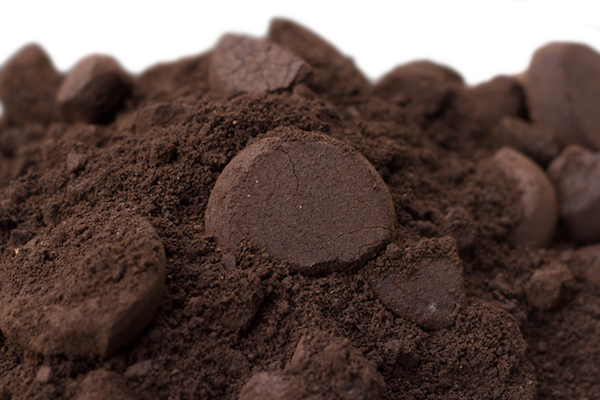
Crafts with Used Coffee Grounds
I can’t say that I was much of an upcycled crafter before children, but my craft-obsessed 4-year-old has me looking at ordinary household items in a new light. If used toilet paper rolls can become a spaceship, what can you make with used coffee grounds?!?!
Dying Textiles With Coffee
Anyone who’s ever spilled coffee down the front of a white shirt knows that coffee makes an incredibly effective natural dye. It can be nearly impossible to get a set coffee stain out of cloth, which means it’s a great way to dye fabrics in shades from tan to brown.
Start with used coffee grounds and bring them to a boil in a pot of water. The flavor of twice brewed coffee may be horrible, but it stains just as well the second time it’s brewed. Adding a few tablespoons of vinegar will help set the dye.
Wring out the fabric and then hang it to dry completely. To help set the dye further, run an iron over the cloth or place it in the dryer on high (when it’s already dry).
Wondering what coffee dye looks like? Apartment Therapy has some great examples.
Antiquing Paper Using Coffee Grounds
Similar to the process of dying fabric with coffee grounds, you can do the same thing with paper. But why on earth would you do that?
The process is called antiquing, and it takes a regular piece of paper and makes it look like it’s hundreds of years old. It’s a fun project if you’re teaching kids about the constitution and you want to create something realistic (and tangible to study). Or you can use it to create some really unique party invites.
In my case, I’m a huge nerd into the society for creative anachronism. (Think renaissance fairs, but without spectators.) There’s always a market for a paper that looks like it’s historical, and you might even make a pretty penny selling antique craft paper so the Vikings can write out their mead recipes in style.
Here’s a detailed tutorial on how to antique paper with coffee grounds.
Coffee Candles
Homemade candles are easier than you think, and adding in a bit of dried spent coffee grounds will make them smell amazing.
Kids Activities with Used Coffee Grounds
Thinking kid’s activities don’t qualify as “practical” uses for coffee grounds? I’m guessing you don’t have kids…
Anyone who has kids knows the value of a few hours of free entertainment. There are a number of kid-friendly crafts and activities that will keep kids excited and engaged for hours. With a little bit of planning, you can even make it education too.
Coffee Mud Play Dough
Add a bit of used coffee grounds to homemade playdough and you’ve got Brown Mudd Playdough.
KidsActivities.com has a simple homemade recipe that uses about 1/2 a cup of used coffee grounds to make just over a pint of play dough.
Coffee Fossils
A bit like homemade play dough, fossil dough is designed to harden completely.
Crafts by Amanda suggests making them into simple earth day crafts for kids.
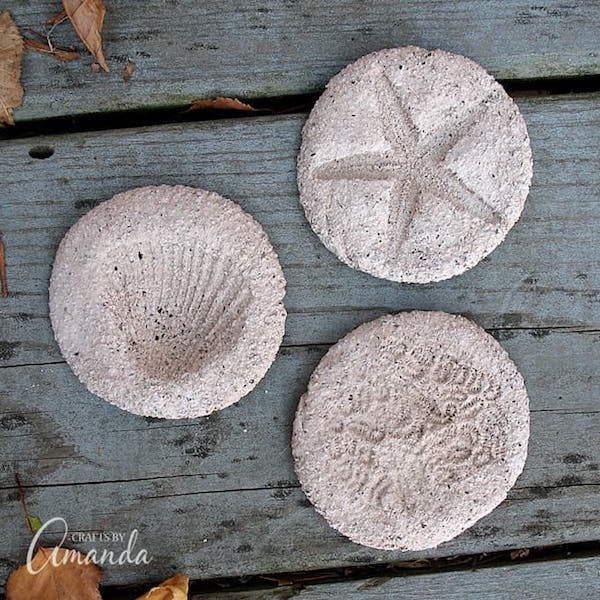
Coffee Surprise Eggs (or Rocks)
Surprise eggs are hugely popular as kids just can’t resist finding out what’s inside. They’re also wicked expensive, and a brilliant marketing ploy.
This recipe for coffee surprise rocks is part of a homemade dinosaur archeological activity, with all the wonder of surprise eggs tucked into an otherwise educational activity.
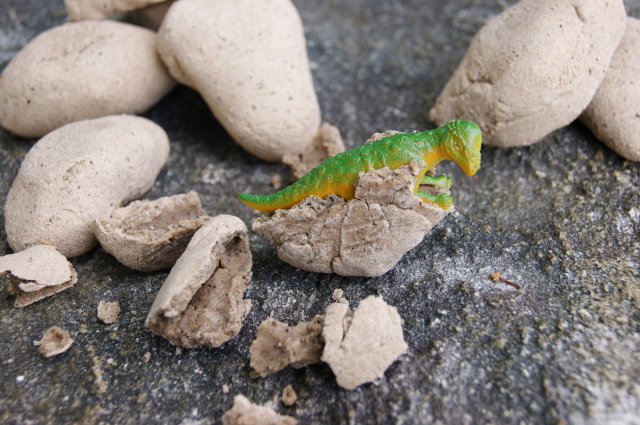
Coffee Slime
I’ll admit I just don’t get the slime thing. Who on earth wants to make slime…intentionally?
I’m in the minority though, and homemade slime for sensory play is a huge hit, especially with older kids, namely middle school kids. While on the one hand they’re growing up and want to appreciate adult smells/flavors/tastes, they also have this incredible attraction to the gooey and gross.
Enter homemade coffee slime for hours of tween entertainment….
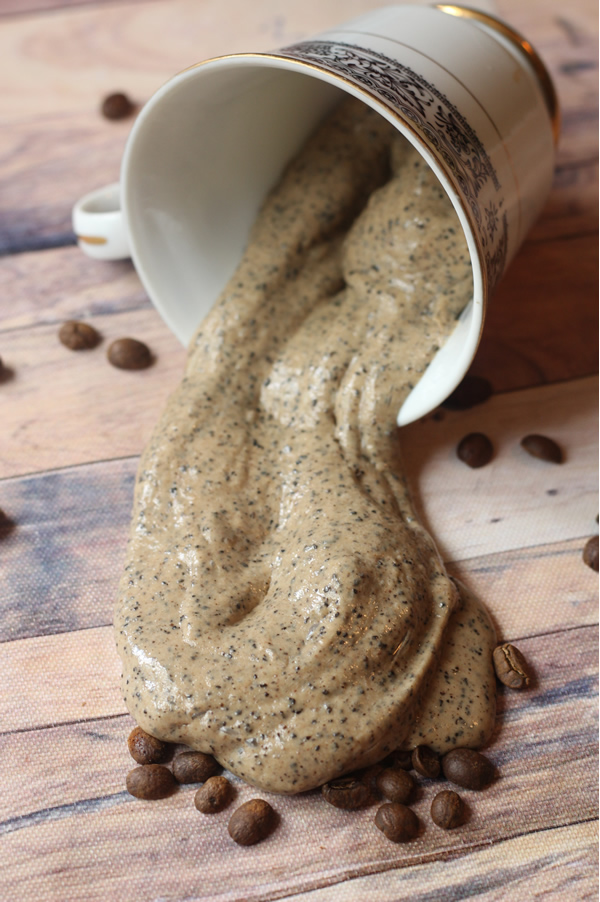
Coffee Easter Egg Dye
Natural Easter egg dyes are a great way to keep artificial food dyes away from kids (and their food). It’s easy enough to make bright red eggs with beets, or yellow eggs with onion skins, and of course, dark brown eggs with coffee grounds.
You can even get fancy with your coffee easter egg dye and use it to imprint leaves, stripes, and tye-dye on your eggs. No need to just do boring old brown!
Coffee Painting
My kids love to paint, almost as much as they love mud. I can set them up on the floor of the kitchen with used coffee grounds and paper and they’ll paint for hours.
Gives me plenty of time to pour another cup of coffee from the french press, because of course, they’re going to need more grounds once they run out…
You can even fancy it up a bit with a little direction, like in these coffee dirt and worms paintings.
Coffee painting isn’t just for kids you know…check out this article on talented artists who paint with coffee and I bet you’ll be impressed.
DIY Skincare & Beauty with Coffee Grounds
While that 4th cup of coffee in the morning’s probably not actually doing anything for the dark circles under my eyes, there are plenty of ways to use the spent grounds to craft homemade beauty products. The enzymes in coffee can work wonders for your skin, and it’s a convenient natural exfoliant too.
Studies have shown that caffeine in beauty care products can have a number of benefits.
Caffeine is often used in anti-cellulite products because it can prevent excessive accumulation of fat in cells when absorbed through the skin. It’s also known to increase microcirculation in the smallest capillaries, which further reduces cellulite on the skin. Finally, actually using coarse coffee grounds instead of just caffeine extract further stimulates blood flow to smooth cellulite.
Coffee is used in some hair products because it’s been shown to stimulate hair growth, both by stimulating blood flow to the scalp and inhibiting activity that causes hair loss.
If that’s not enough, coffee also contains antioxidants that can help protect cells from UV radiation.
Potential health benefits aside, many people toss used coffee grounds into their beauty products simply because they smell good.
Coffee Scrubs & Bath Bombs
Be sure to completely dry the used coffee grounds before making a sugar scrub. Any moisture in the grounds can cause the scrub to mold before you get a chance to use it, but fully dried grounds will keep in a scrub for a long time.
- Coconut Coffee Sugar Scrub Cubes ~ Savvy Naturalista
- Peppermint Mocha Body Scrub ~ Your Beauty Blog
- Coffee Bath Bombs ~ Ruffles & Rain Boots
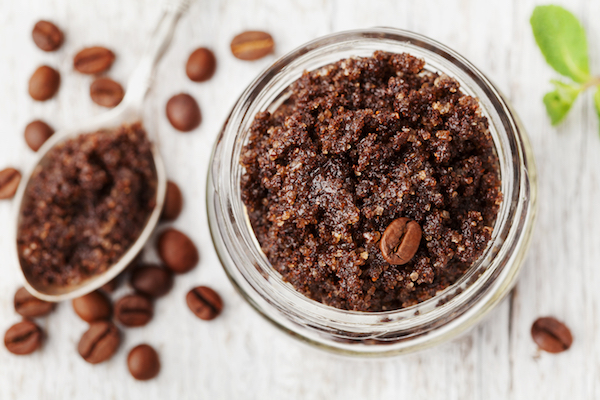
Coffee Eye Pads, Cream, and Serum
There’s some evidence that coffee applied topically can help reduce dark eye circles, leading people to just dab wet used coffee grounds on their skin under their eyes. For something a bit more refined, try these homemade under-eye remedies with your leftover grounds.
- Coffee Eye Serum ~ Way of Being
- Coffee Eye Cream ~ Primally Inspired
Coffee Lip Balm
You could probably argue some kind of health argument for this one, something about improved circulation…but I’m pretty sure most people making coffee lip balm are just love the flavor.
- Coffee Lip Balm ~ Soap Deli News
Coffee Shampoo, Hair Mask and Hair Dye
Used to help improve shine and promote hair growth in brunettes, be careful about using coffee in hair products if you have light hair. It’s also used as a natural hair darkening pigment…
- Coffee Shampoo ~ Wellordie
- Natural Hair Dye ~ Healthline
- Coffee Hair Mask ~ Death Wish Coffee
Coffee Soap
You can make homemade soap from scratch (lye and all), adding in coffee for exfoliation. Alternately, simple melt and pour soapmaking has no lye and is done start to finish in about 20 minutes.
- Coffee Soap ~ Frugal Farm Wife
- Melt & Pour Coffee Soap ~ Imperfectly Happy
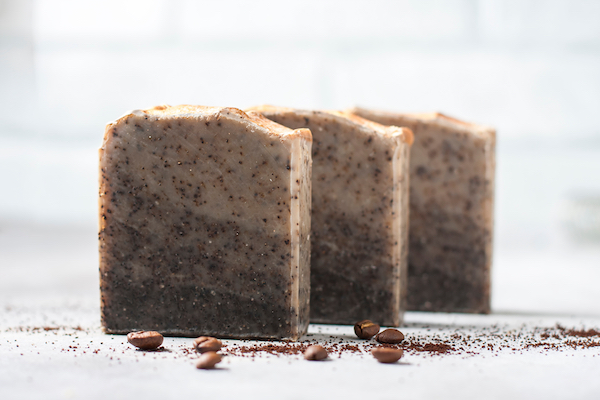
Recipes Using Old Coffee Grounds
So I know what you’re thinking…used coffee grounds probably taste nasty. I thought so too…until I came across literally dozens of recipes (from serious chefs) that re-use spent coffee grounds.
I’m a huge fan of just about anything that comes out of NOMA, a Danish restaurant that’s at the forefront of culinary research. They do all manner of interesting flavor experiments with fermentation (Think miso, vinegar, kombucha, etc), and wrote a really spectacular book called The Noma Guide to Fermentation. They also pioneered the Nordic Food Lab, which does all sorts of interesting research into traditional Nordic foodways (including crazy things like bark flour).
Much to my surprise, one of the original founders also wrote a book on cooking with food scraps called “Scraps, Wilt and Weeds: Turning Wasted Food Into Plenty.” The book includes a whole chapter on spent coffee grounds, with recipes for coffee grounds biscotti, panna cotta, ice cream and more. If one of the world’s top chefs thinks that coffee grounds are worth a try, then I might have to give them a chance.
According to the author, “I started thinking about the waste from coffee because in a restaurant people drink a lot of coffee; you can end up throwing away a lot of coffee grounds. We decided to start cooking with used coffee grounds, and the dishes we came up with tasted just as good – with a rich dark coffee – as they would have using fresh coffee grounds. Just store the ground in the refrigerator in a sealed plastic container with enough space for air circulation.”
Another similar book called Cooking with Scraps also contains coffee grounds recipes and notes that while coffee loses its characteristic acidity during the first brew, it retains most of the true “coffee” flavor and aroma. While they may not make a good second cup of coffee, they’re still great for flavoring baked goods.
Food52 even chimes in, encouraging die-hard coffee drinkers to consider baking with their spent coffee grounds:
“Many of us start each day with a cup (okay, a few cups) of coffee. Whether we use a French press or a jerry-rigged cold brew contraption, this means that every day, we’re using coffee grounds—lots!—and then tossing them. But did you know that those grounds have more than one use? Before putting them in the compost bin, consider how good a steak, pie, or ice cream would taste with a kick of that bold, rich flavor.
Happily, spent coffee grounds still pack a punch—more than enough to lend their roasty goodness to dishes savory and sweet. They can be put to work in everything from rubs for meat to sweet treats like cakes and ice cream. In fact, you can swap in spent grounds for just about any recipe that calls for ground coffee. (Note that you probably wouldn’t want to try grounds as a swap in recipes calling for instant espresso powder, since in many cases espresso powder would dissolve or be otherwise undetectable texture-wise, which is not the case with coffee grounds.)”
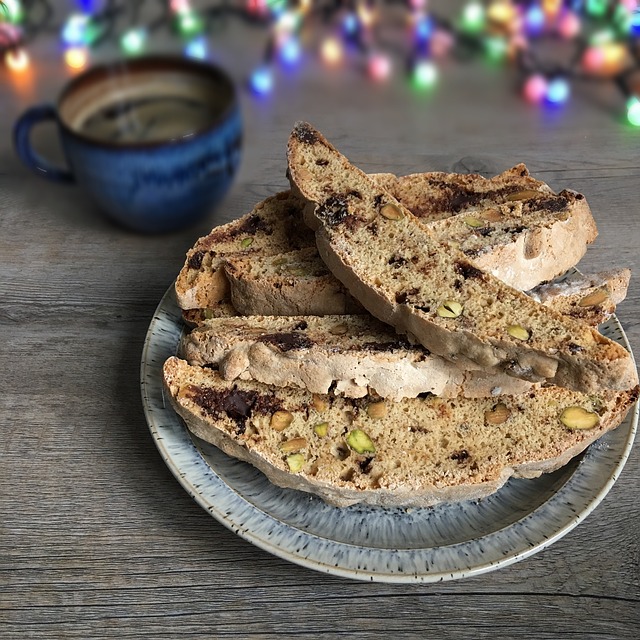
While you can use dried spent coffee grounds in place of coffee in many recipes, here are a few tried and true ones actually developed using spent coffee grounds:
- Coffee Grounds Biscotti ~ Splendid Table reprinted this recipe from Scraps, Wilt and Weeds and 1/4 cup of used coffee grounds flavor about 20 biscotti.
- Espresso Grounds Brownies ~ The blog Fork in the Road is devoted to helping you green up your kitchen and reduce waste, even used coffee grounds. These brownies look amazing and according to the author, “Leftover Espresso Grounds Brownies, a rich fudgy brownie recipe made with leftover espresso grounds. Reuse those coffee grounds for a deliciously moist chocolaty treat!” Not sure? The Guardian also has a recipe for spent espresso grounds brownies, and Chef Billy Parisi has one too…
- Coffee Grounds Ice Cream ~ While the used coffee grounds ice cream recipe from Scraps, Wilt and Weeds isn’t printed online, try using spent coffee grounds in this recipe from Food52. They start by infusing coffee grounds into cream and then throw a handful of grounds directly into the ice cream. “You’d think adding grinds would create a sandy texture. Not the case. The coffee bits add just the right amount of pizzazz to contrast with the ice cream’s rich flavor.”
- French Silk Pie with Spent Coffee Grounds Crust ~ Again from Food52, who can say no to French silk pie!?!?! The pie itself contains 3/4 cup spent coffee grounds.
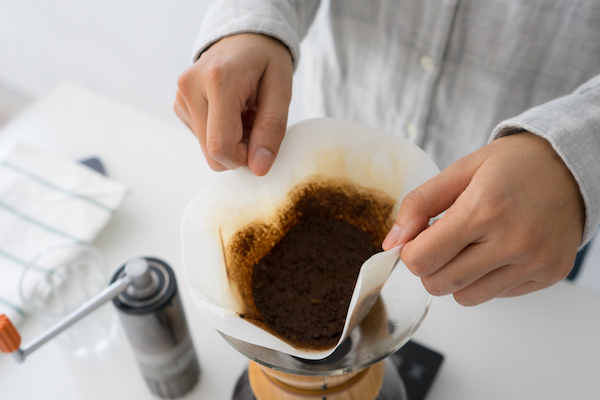
More Ideas
I really hope this has inspired you to look at a common “waste product” in a new light, and with any luck saves a lot of otherwise useful coffee grounds from needlessly filling up the landfill.
How do you use spent coffee grounds? I know there are more creative ideas out there and I’d love to hear how you put them to use in your house. Leave me a note in the comments.
In the meantime though, keep on reading with these similar posts:
- 70+ Uses for Wood Ash
- 30+ Ways to Preserve Apples
- 30+ Ways to Preserve Eggs
- 20+ Ways to Preserve Lemons
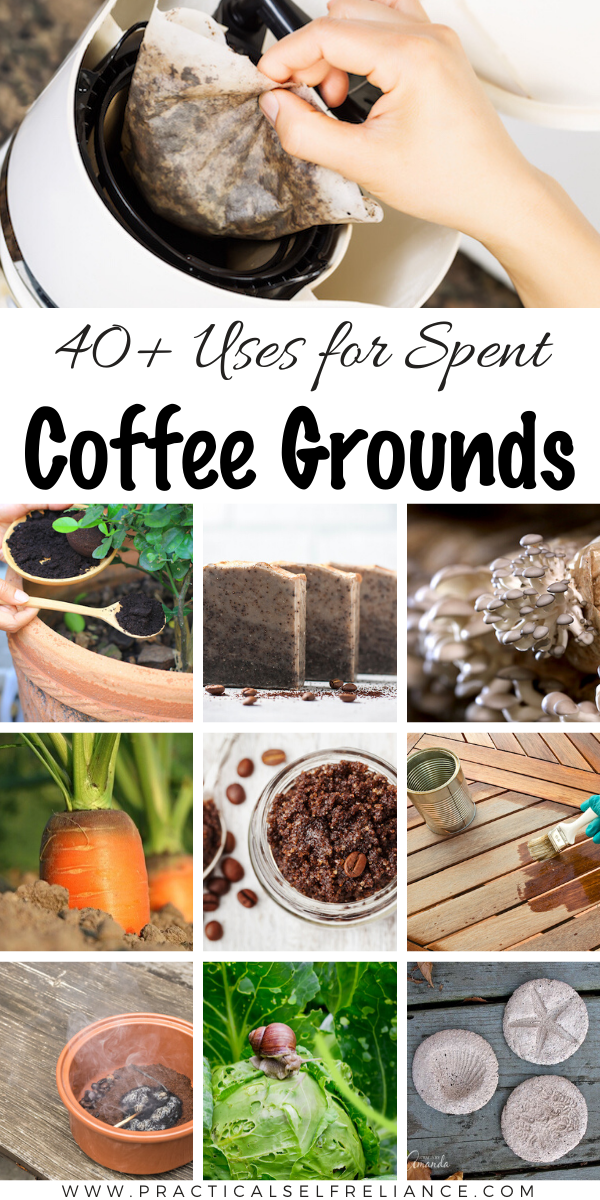




Great ideas Ashley.
Thank you!
Nice Post.
Thank you. So glad you enjoyed it.
Lots of good stuff in here….. although I’ve never met a cat that hated the smell of coffee, and have lived with several that loved it, including one who would roll on coffee beans like they were catnip, if you let him.
Oh my, that would be quite a site.
This is the best article hands down that I’ve seen on multiple coffee grounds uses. The links to dispell myths are super helpful and informative! I get lots of coffee grounds from my local restaurants and this is great!
Thank you. So glad you enjoyed the article.
I never knew that i could do so many things with the coffee grounds. I usually throw them away when I no longer need them. Thanks a ton for sharing the resource.
You are incredibly gifted to share your great and powerful ideas that are simply put before a complex world .
Only if most of us think like the way you do and apply it to our life.
it would make for a truly beautiful world.
Kudos.
Much Love , Stay Blessed
I’m intrigued by many of these uses. But how do you dry them out? For plants should they be dry or damp when added to the plant pots?
For plants, they can be wet. Other things like play dough where they’re going to get wet in the recipe they can be wet. Others though, you’d have to dry them out to prevent them from molding. Burning them as an insect repellent they’d obviously have to be dry to burn.
To dry them, you can spread them out on a tray on a sunny day and that works fine. In winter, a few minutes spread out on an oven tray in the oven is plenty.
To dry them out, I simply set the filter with the used grounds outside (weather permitting, of course) on a plastic lid (mainly a barrier to prevent staining the object I am setting it on) and every so often stir them around, until they are dry.
I have always just emptied the grounds in the sink and turned the faucet on. It keeps the pipes clean. It is abrasive and gets rid of any grease.
Interesting. My parents were always really paranoid that even a small amount of coffee grounds down the sink would clog the drain. Of course, they had us kids set up the coffee for them and do the dishes, so we’d have to be very careful to avoid getting a speck of grounds near the drain. Kinda funny in hindsight, how militant they were about it. It sounds like that may not be true after all…
This article is so brilliant! Thank you!
I have also used spent coffee grounds to manufacture beautiful light fixtures in a recent Coffee Shop build. The produce an amazing warm hue when light is passed through the shade of the fixture. See it here on Instagram.
https://www.instagram.com/p/BuucuDlAKVl/?igshid=14ynhwxl1mge2
Wow, that is beautiful, thanks for sharing!
I love your writing and your wealth of ideas. I am only using de-caffeinated, organic beans but will start using the grounds today on my houseplants! Thank you and good day!